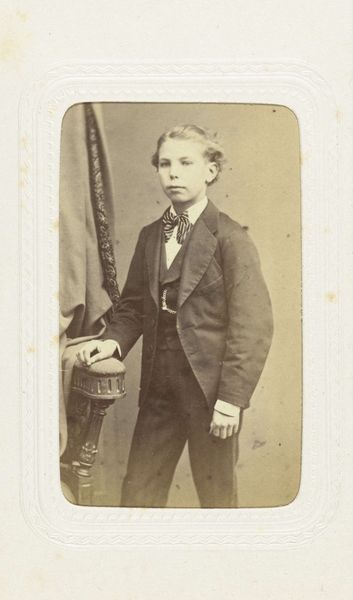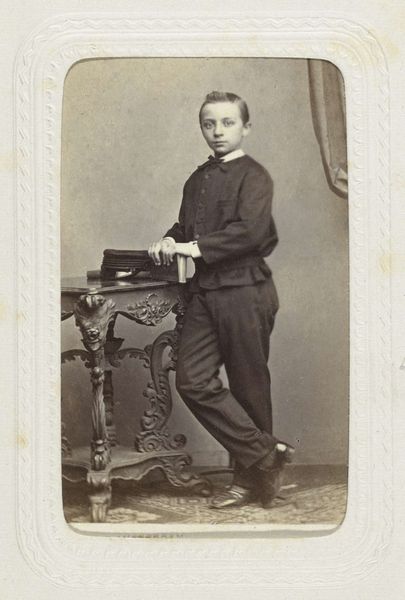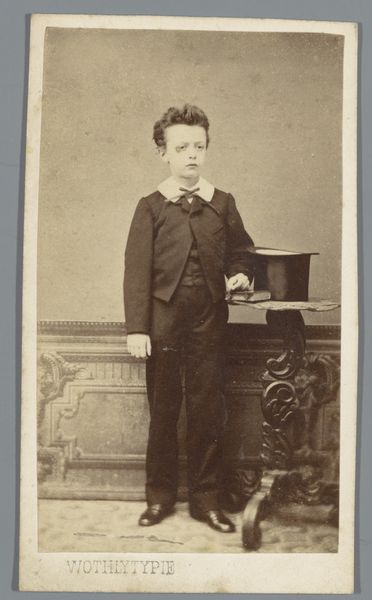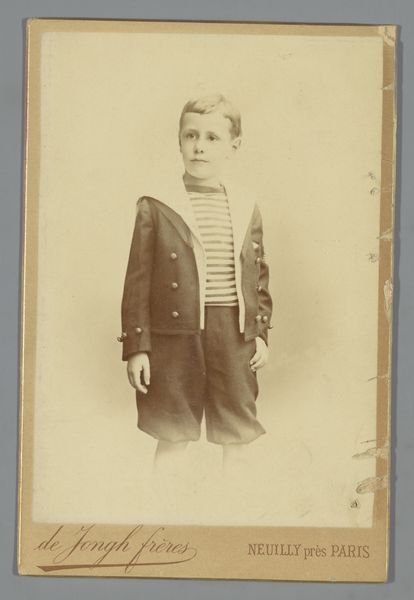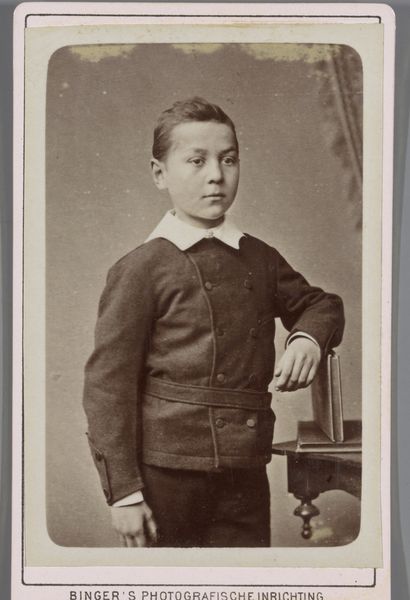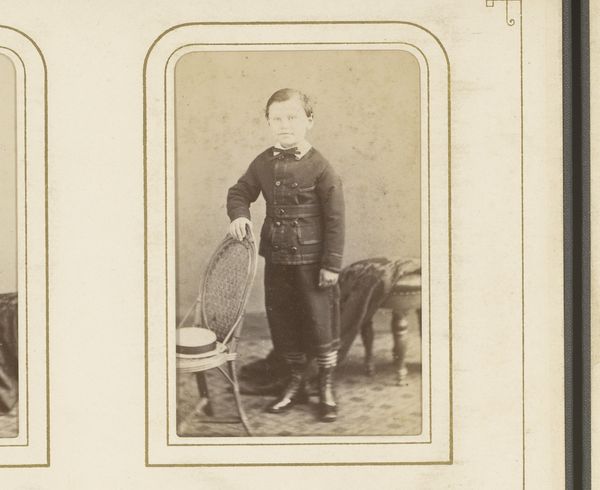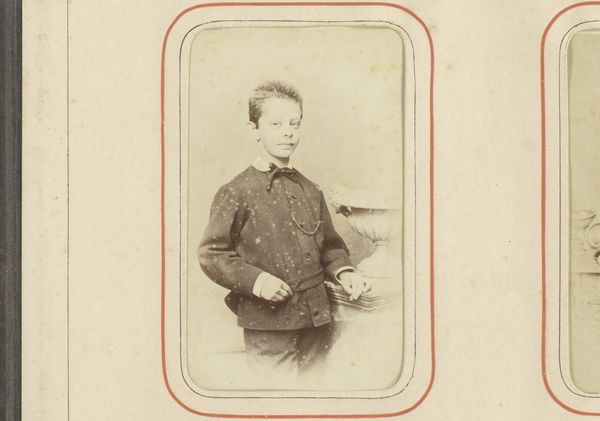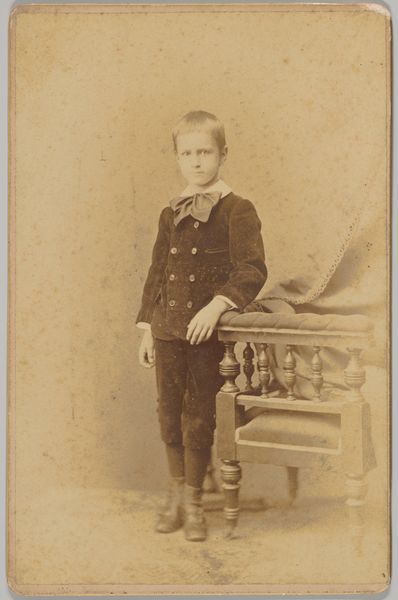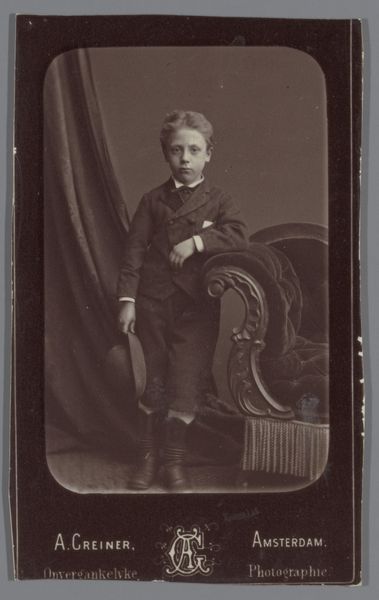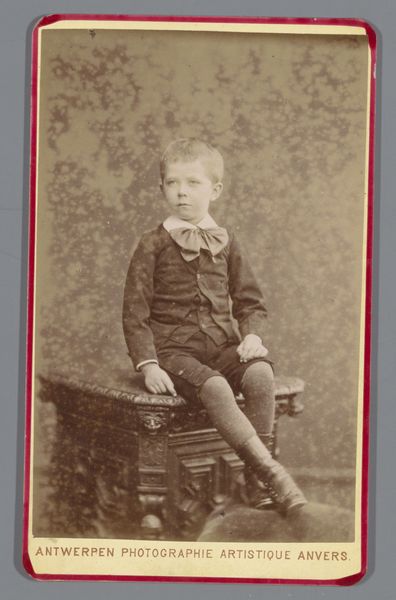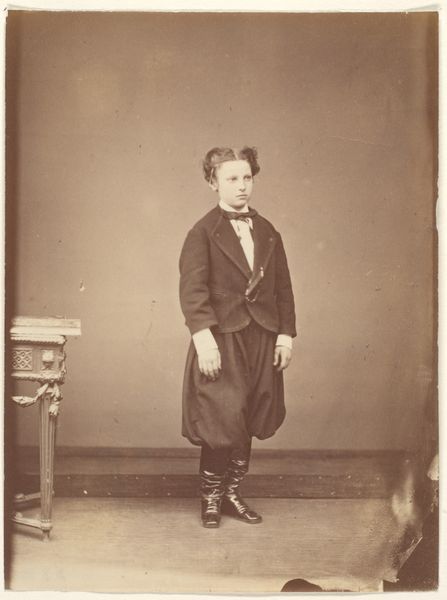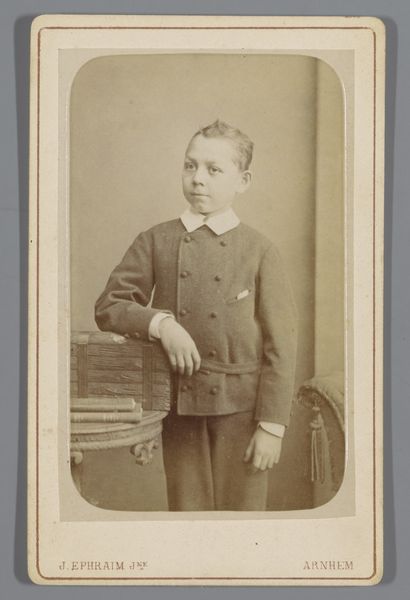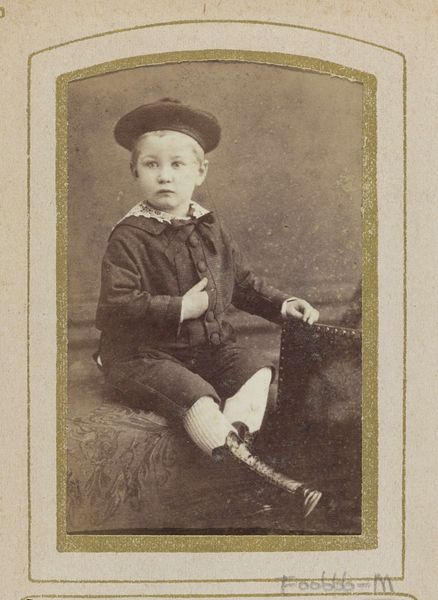
daguerreotype, photography
#
portrait
#
daguerreotype
#
archive photography
#
photography
#
historical photography
#
realism
Dimensions: height 80 mm, width 54 mm, height 296 mm, width 225 mm
Copyright: Rijks Museum: Open Domain
Curator: Here we have an intriguing studio portrait of a young boy seated in a chair. The daguerreotype, dating back to the mid-1860s, is the work of Albert Greiner and forms part of the Rijksmuseum collection. Editor: What strikes me immediately is that guarded gaze. There's a vulnerability there, almost hidden, wouldn't you agree? I imagine he’s thinking "hurry up" and is probably longing to go out and play. Curator: Absolutely. Portraiture, particularly photographic portraiture at this time, was as much about the performance of status and respectability, as it was about capturing likeness. He is well dressed for a boy his age. His posture stiff and upright; you sense the controlling hand of Victorian societal expectations, don't you? Editor: It's there for sure, I just feel this melancholy clinging to the image. It looks like a sad story framed with those muted, sepia tones. Like some sort of historical novel where the only hero is time. What gets me thinking too, who would put so much energy into something that really lasts forever and then just disappears from a person's view and what must he have felt. Did he feel like royalty? Did it seem magical to him, even? Curator: Indeed, that's a wonderful way of putting it! The sitter's identity seems to have faded. Greiner's photography tells its own silent, interesting story about portraiture and the way children are seen in such times. There is this sense of an industry still trying to get its own momentum by figuring out both technical possibilities as well as cultural appeal. Editor: What you say reminds me how an artist wants the work to find a new home somewhere, someone's wall, where there's constant observation! When it becomes a collection item or historic documentation, I get worried; however, perhaps that's exactly why stories like this last. Food for thought. Curator: Agreed. It presents so many facets, technically innovative, socially reflective, and, of course, artistically mysterious. Editor: Leaving us pondering, which is all a work of art should aspire to do, right?
Comments
No comments
Be the first to comment and join the conversation on the ultimate creative platform.
